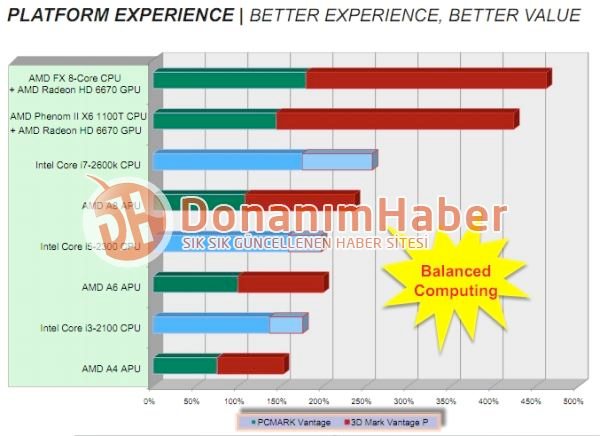We had already heard whispers about AMD's plans to roll out Llano and Bulldozer by mid-2011 but today things got a bit more specific thanks to an internal schedule leaked to DonanimHaber. According to the slides, the APU salvo begins at Computex on June 1 with the announcement of the AMD A-Series "Sabine" notebook platform, as well as the AMD 900 Series chipset and the Vision 2011 branding under which the platform will be pushed.
On June 7, at the E3 conference, AMD plans to reveal the FX-Series brand and logo and the AM3+ platform. Following that the Sabine platform will actually launch in Asia on June 12 as AMD kicks off the Fusion Developer Summit.
Llano will then be formally announced for the rest of the world on June 14 at AMD's 2011 Client Launch Event. Both the Sabine (notebook) and Lynx (desktop) platforms for the A-Series will be announced at that date but wont see a release until the end of the month on June 26. Unfortunately, there's no mention of when the FX-Series and Lynx platform will launch but judging by the packed calendar and their announcement in June it probably wont be long after.

According to previous leaks the desktop version of Llano will debut on July 20 with five A-series models, sporting two or four x86 cores, integrated graphics with 160, 320 or 400 Stream Processors and 100W or 65W TDP ratings. The FX series should follow shortly and is expected to comprise eight models, though not all of them will be available at launch. These chips will pack 4, 6 or 8 cores, up to 8MB of L3 cache, and have a TDP of up to 125W.
June and July will undoubtedly be two very important months for AMD as it finally brings Fusion to its mainstream and high-end offerings. According to the company's own in-house performance projections -- if leaked slides are to be believed -- the A-Series is still behind its Sandy Bridge counterparts on the CPU front, but it makes up the difference in graphics performance. Meanwhile, AMD's 8-core FX series chip is said to match the Core i7 2600k in CPU performance.